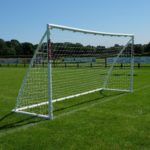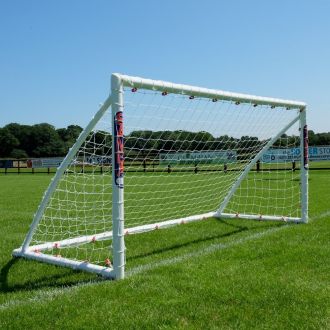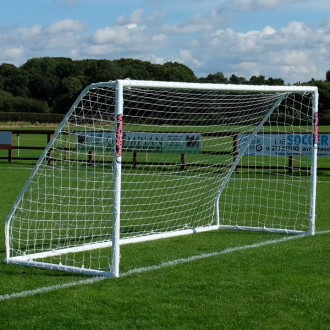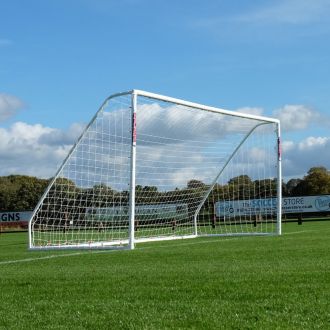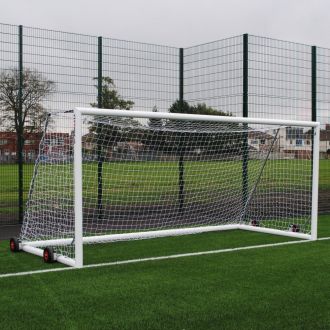How to Safely Anchor Your Football Goals
Full-size football goal posts are heavy, rigid structures that require proper anchoring. If they’re not fixed into the ground properly, they can move around. And if they fall onto a player, they can cause life-changing injuries.
Once you’ve chosen your preferred goalposts, you need to ensure you have the equipment needed to keep them firmly in place. The safest method of anchoring depends on the type of goalpost you’re using.
The guidelines surrounding goalpost safety are laid out by BS EN, ASTM and AS safety standards — and they’re there to keep players safe.
Ascertain what type of goalposts you’re using, and ensure you’re anchoring them in the correct way.
Self-weighted football goals
If you’re constantly erecting and dismantling your goals, you probably want a system that is easy to assemble and store away. Self-weighted goals are ideal, as they don’t have to be rooted to the ground every time you want to use them.
A self-weighted goalpost usually features weights in the bottom frame. In some cases, the weight is inserted once the goal is in place. A range of methods are used to add weight, including water canisters. The additional weight ensures that the goal doesn’t topple over when struck or subjected to windy conditions.
Socketed football goals
A socketed goal post is a semi-permanent system that involves fixing ground sleeve sockets into concrete. The posts then slip into the sockets, well beneath the ground. This method of anchoring goalposts is widely regarded as the safest — and it’s essential for heavy, full-size goals.
Your ground sleeve sockets need to be at least 46cm deep. And they should be fixed into place with a cube of concrete 60cm in length, depth and width. If the soil is particularly wet and unstable, you might need to significantly increase the amount of concrete you use.
U-pegs
There are times when it’s impractical to fix goals into the ground. The process can take several minutes, and it’s not suitable for all goal types. The ability to erect and dismantle goals is essential for training sessions and constant changes of venue.
If you’re using freestanding football goal posts on grass surfaces a set of steel u-pegs may be the best anchoring solution. The pegs go over the backbars, and they’re hammered into the ground with a mallet. The larger the goal, the more pegs you’ll need. You should also add more pegs than usual if the soil is wet or loose. If the soil is excessively loose, consider using anchor weights or sandbags instead.
Sandbags
Sandbags are a simple, cost-effective way to keep freestanding goal posts firmly in place. And they don’t need firm ground in order to be effective. You simply lie the sand-filled bags on the backbar. The average bag weighs around 20kg, but you’ll need at least four for a full-size, freestanding goal.
Steel anchor weights
A steel anchor weight is another effective solution for loose or unstable pitches. They are large metal blocks that attach to the goal’s frame with chains and snap hooks. You can add as many as you need, but the posts need to have the necessary hooks for fixing the chains in place.
All-in-one goalposts
If you’re buying goal posts, the best — and most cost-effective — solution is to buy an all-in-one package that includes everything you need to comply with BS EN 16579.
Take the Weighted Wheeled Football Goal Package, for example. It comes with internal weighted bars, so there’s no need to buy anything else. You simply unpack the goal and position it.
For a socketed goal, choose something that comes with the necessary steel or aluminium sockets and drop-in socket caps. If you follow the assembly instructions, your goal will be compliant with BS EN 16579.
Goalpost safety is vital in any football club. If your goal moves around or becomes unstable, it has the potential to cause serious injuries. But if you take the necessary steps to anchor your goals into place, you have absolutely nothing to worry about.

